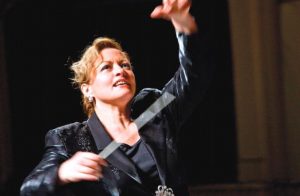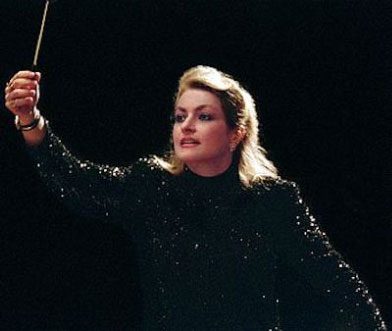Five stars: An essential disc for any lover of Ginastera’s music
Argentinian music owes a large debt to the Uruguayan-born conductor Gisèle Ben-Dor ……….her excellent conducting and the superb playing of the London Symphony created a landmark in Ginastera’s discography.
-Huntley Dent, 2022
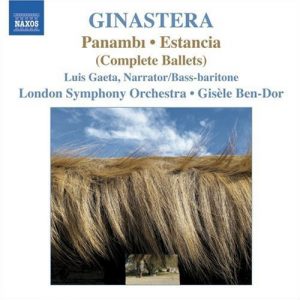 When Naxos acquired this CD in 2006 from its original label, Conifer, one of the most essential Ginastera recordings was kept in print. The purpose behind Ginastera’s two early ballets—Panambí from 1937, which he chose to make his op. 1, and Estancia from 1941—was to find a modern musical expression for deeply felt Argentinian folk roots. What the young Ginastera created is strikingly impressive. Panambí joins other scores that capture the “Indianist” spirit of indigenous peoples, such as Silvestre Revueltas’s Sensemayá and La noche de los Mayas and Carlos Chávez’s Sinfonia India. There are no real equivalents, however, for Estancia, a breakthrough score in describing the hard, isolated life of the gaucho, or Argentinian cowboy, on the vast grasslands of the Pampas.
When Naxos acquired this CD in 2006 from its original label, Conifer, one of the most essential Ginastera recordings was kept in print. The purpose behind Ginastera’s two early ballets—Panambí from 1937, which he chose to make his op. 1, and Estancia from 1941—was to find a modern musical expression for deeply felt Argentinian folk roots. What the young Ginastera created is strikingly impressive. Panambí joins other scores that capture the “Indianist” spirit of indigenous peoples, such as Silvestre Revueltas’s Sensemayá and La noche de los Mayas and Carlos Chávez’s Sinfonia India. There are no real equivalents, however, for Estancia, a breakthrough score in describing the hard, isolated life of the gaucho, or Argentinian cowboy, on the vast grasslands of the Pampas.
There was only a relatively brief period when the U.S. became aware of the richness of the folk-inspired music of Latin and South America. Aaron Copland made an extensive official tour south of the border in 1941 (presumably as part of Roosevelt’s Good Neighbor policy) and was fascinated to discover Villa-Lobos, Chávez, Ginastera, and other composers in countries that had developed their own musical culture largely outside the notice of North America. In his own words, Copland found the experience “like discovering a new continent,” yet the light of discover flickered for a while before dying out.
Argentinian music owes a large debt to the Uruguayan-born conductor Gisèle Ben-Dor and recordings like this one from 1998, in which her excellent conducting and the superb playing of the London Symphony created a landmark in Ginastera’s discography.
I’ve extended this introduction because there is such a huge distance between us and the Argentina that Ginastera lived in. It takes extensive program notes like the ones provided here to reveal the cultural significance of both ballets. But in brief, Panambí takes its title from the Panamá River in northern Argentina, the home of the Guaraní people. The ballet’s story of love and magic is derived from Guaraní legends (the score’s subtitle is “Choreographic Legend”), and its musical idiom joins the stream of primitive Modern music whose source is Le sacre du printemps. As rare as it is to hear the suite of dances that Ginastera extracted from the full score, a staging of Panambí is never likely to be encountered outside Argentina.
In 17 dances and scenes lasting nearly 40 minutes, Ginastera poured out a stunning wealth of invention, much of it echoing the influence of Falla, Debussy, Ravel, Bartók, and Stravinsky, but in his own voice. The episodes alternate between raucous primitivism and quiet lyricism, making room for warriors, spirits of the dead, water sprites, and a “pantomime of eternal love.” Heard as pastiche, Ginastera’s score is as brilliant as another post-Sacre creation, Prokofiev’s Scythian Suite. Finger-wagging does no good, but in a fair world Panambí would be acknowledged on the same scale as any number of works by Bartók and Prokofiev. There is a dizzying abundance of creativity in the music, which represented a major breakthrough in Ginastera’s journey to become Argentina’s major nationalist composer.
Estancia, which is also much better known in a suite of dances than the complete ballet, had a frustrating birth. It was commissioned in 1941 by the wealthy dance patron Lincoln Kirstein, who was touring South America with American Ballet Caravan. The intention was to premiere the work in New York with choreography by Balanchine, but the company disbanded in 1942, and Estancia languished until it was premiered in 1952 in Buenos Aires. In the meantime, Ginastera extracted four dances for orchestral performance in 1943.
From a young age he had been fascinated by the rural culture that was visible even in the area of Buenos Aires when Ginastera was a boy. But very quickly a split divided urban and rural culture, and by the time Estancia was composed, the gaucho had become as mythical as American cowboys of the Wild West. Where cowboy were mythologized by dime novels, gauchos owed their myth to an epic poem from 1879 by José Fernández, which is named after its hero, Martín Fierro. Ginastera, like countless other Argentinians, knew and revered the poem.
The structure of Estancia, in 12 scenes lasting around half an hour, describes a working day on a ranch (estancia) from dawn through nightfall to dawn the next day. Besides the life of a working ranch, we meet a party of visitors from the city. One of the party, a young man, falls in love with a girl on the estancia, and he proves himself by breaking horses in the ballet’s central episode, “La doma” (Rodeo). As in the earlier ballet, powerful dance numbers alternate with tender lyrical episodes. Tying the story back to Martín Fierro, there are narrated lines from the poem about the loneliness of the gaucho, and two songs with texts from the poem. (Conifer originally included these spoken and sung texts, but Naxos doesn’t, unfortunately—a link is provided to Naxos’s website that contains the texts.)
It is characteristic of the music that Estancia refers to the rhythms of traditional gaucho dance and the notes of the open strings of a guitar. Unlike the primitivism of Panambí, the idiom here is more reminiscent of Falla and other Spanish roots. Ben-Dor is a past master of this idiom, and she found an authentic gaucho style in bass-baritone Luis Gaeta, who serves as narrator and singer at intervals—he makes a powerful contribution at pivotal moments in the story.
Beyond the brief sketch I’ve provided, I encourage you to read the fascinating program notes, taken for the Conifer original, in order to gain entry into the complex worlds Ginastera brought to life. In total, this release is essential for anyone with an interest in Ginastera and an ideal opening for making a first acquaintance with his style—these two ballets were seminal, providing the seeds of musical gestures he adopted throughout his long career.


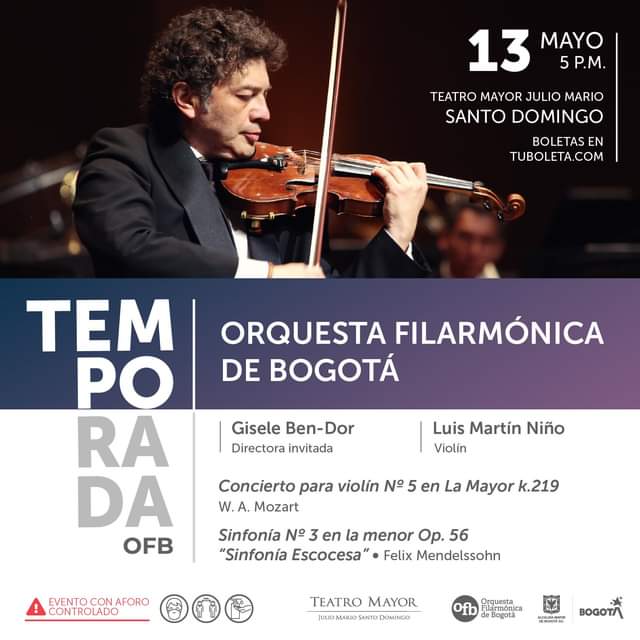
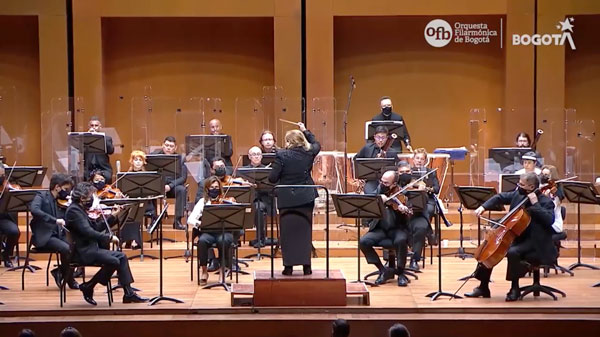
 TOUCHING THE SOUNDS WITH BEETHOVEN
TOUCHING THE SOUNDS WITH BEETHOVEN When Naxos acquired this CD in 2006 from its original label, Conifer, one of the most essential Ginastera recordings was kept in print. The purpose behind Ginastera’s two early ballets—Panambí from 1937, which he chose to make his op. 1, and Estancia from 1941—was to find a modern musical expression for deeply felt Argentinian folk roots. What the young Ginastera created is strikingly impressive. Panambí joins other scores that capture the “Indianist” spirit of indigenous peoples, such as Silvestre Revueltas’s Sensemayá and La noche de los Mayas and Carlos Chávez’s Sinfonia India. There are no real equivalents, however, for Estancia, a breakthrough score in describing the hard, isolated life of the gaucho, or Argentinian cowboy, on the vast grasslands of the Pampas.
When Naxos acquired this CD in 2006 from its original label, Conifer, one of the most essential Ginastera recordings was kept in print. The purpose behind Ginastera’s two early ballets—Panambí from 1937, which he chose to make his op. 1, and Estancia from 1941—was to find a modern musical expression for deeply felt Argentinian folk roots. What the young Ginastera created is strikingly impressive. Panambí joins other scores that capture the “Indianist” spirit of indigenous peoples, such as Silvestre Revueltas’s Sensemayá and La noche de los Mayas and Carlos Chávez’s Sinfonia India. There are no real equivalents, however, for Estancia, a breakthrough score in describing the hard, isolated life of the gaucho, or Argentinian cowboy, on the vast grasslands of the Pampas. Including Gisèle Ben-Dor (Uruguay)
Including Gisèle Ben-Dor (Uruguay)
